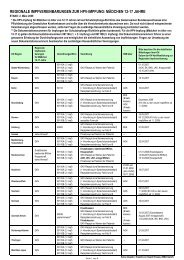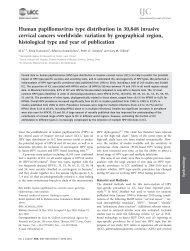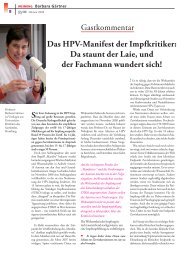Create successful ePaper yourself
Turn your PDF publications into a flip-book with our unique Google optimized e-Paper software.
THE POTENTIAL PUBLIC HEALTH IMPACT OF VACCINES AGAINST <strong>HPV</strong>Diagnostic methodPap smearColposcopyBiopsyPap smearColposcopyBiopsyCancerPre-malignantor subclinicalClinical lesionInvasive cervicalcarcinomaLSIL*, HSIL**Carcinoma in situ<strong>HPV</strong> DNAAsymptomatic orlatent infection<strong>HPV</strong> present innormal mucosaNon-infected womenAdapted from Syrjanen 2000 7*low-grade squamous intraepithelial lesions**high-grade squamous intraepithelial lesionsFigure 1 <strong>HPV</strong> infection and cervical cancer (CC) at population levelSimple theory has identified a critical fraction of the population thatneeds to be effectively vaccinated to eliminate infection (p c), whichincreases as the basic reproductive number of infection (R 0) – thenumber of new infections caused by one infectious individual in anentirely susceptible population – increases: (p c=1-(1/R 0). If an infectionis widespread, more coverage (the percentage of the target populationvaccinated) is required for elimination. Attempts to eliminate <strong>HPV</strong>, asexually transmitted infection (STI), are hampered by high-riskreservoirs where infection can persist. It is more appropriate, therefore,to attempt to reduce the endemic prevalence of infection (p). Here, themechanism that causes vaccine failure when efficacy is below 100%is of crucial importance. The level of protection provided by a vaccine(measured as efficacy) in a trial can reflect a variety of biologicaleffects, and this may be illustrated by considering two extremes ofprotection (see box).The relationship between prevalence, take, and degree of protectionfor a vaccine against an infection in a homogeneous population with areproductive number of 10 is shown in Figure 2. If the vaccine provides‘take’ type protection, there is a linear decrease in the prevalence ofinfection as efficacy (see box) increases, whereas if it provides ‘degree’type protection, there is a non-linear decrease.63








